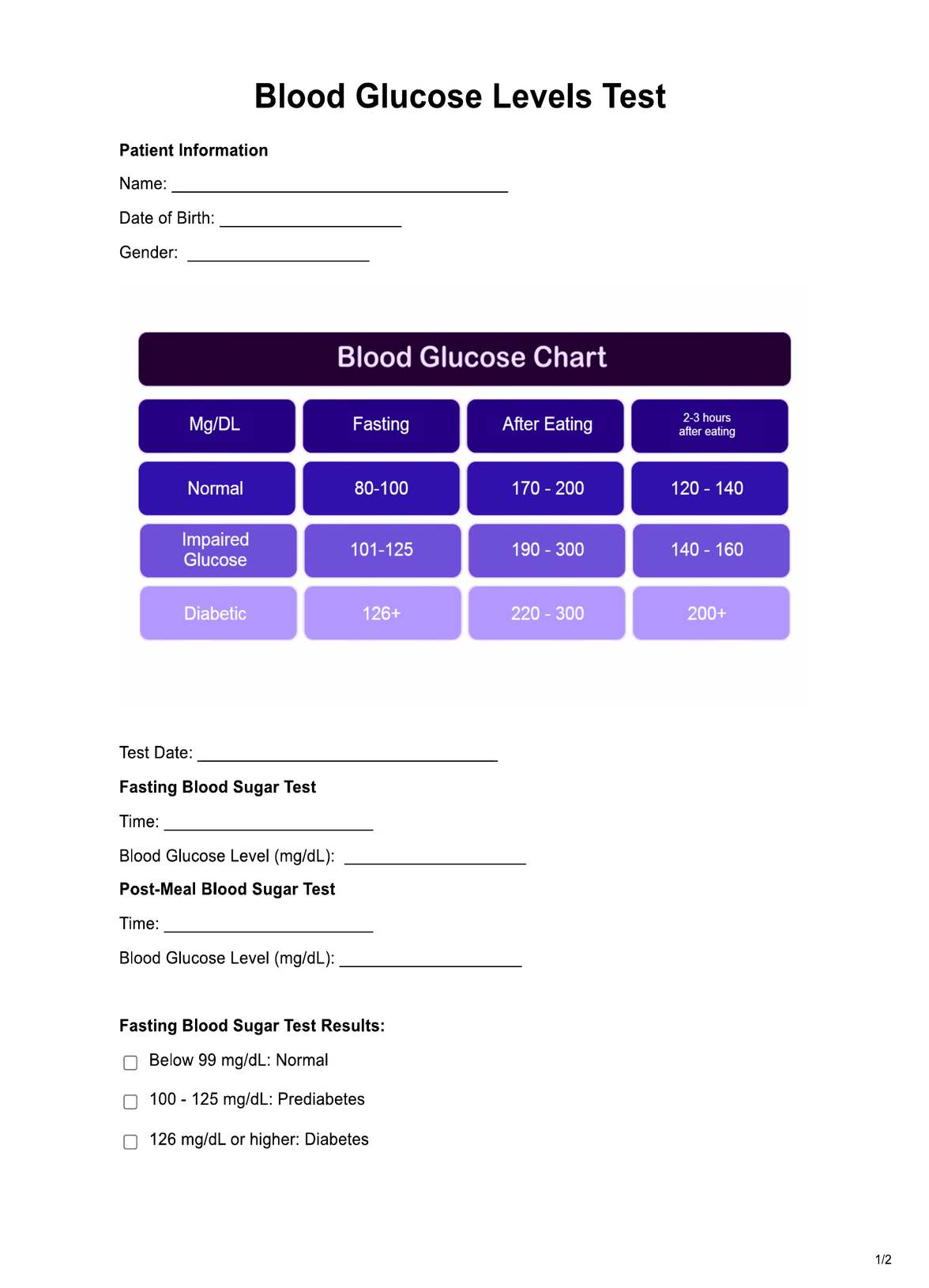It is usually requested by healthcare providers, such as doctors, nurses, or endocrinologists, to monitor and assess a patient's blood sugar levels.

Blood Glucose Levels
Need a Blood Glucose Levels Chart? Easily track blood sugar with the user-friendly chart. Manage diabetes with precision.
Use Template
Blood Glucose Levels Template
Commonly asked questions
The charts are used during routine check-ups, diabetes management, and for patients with blood sugar concerns, helping healthcare professionals make informed decisions about treatment and lifestyle changes.
These are used to record fasting and post-meal blood sugar readings over time. Patients can fill in the chart with their test results, which healthcare providers interpret to make recommendations.
EHR and practice management software
Get started for free
*No credit card required
Free
$0/usd
Unlimited clients
Telehealth
1GB of storage
Client portal text
Automated billing and online payments











